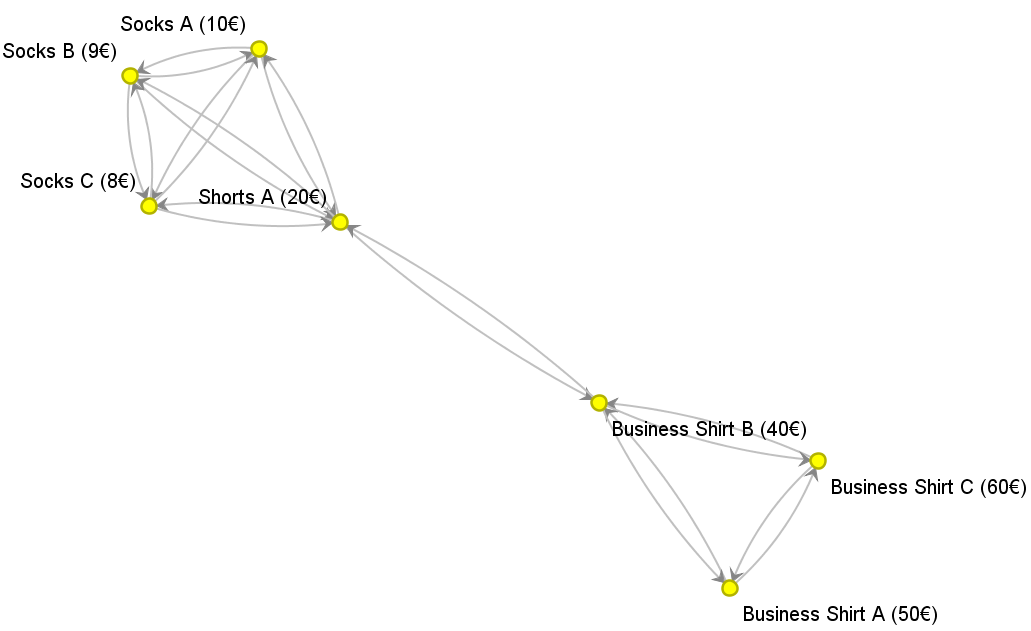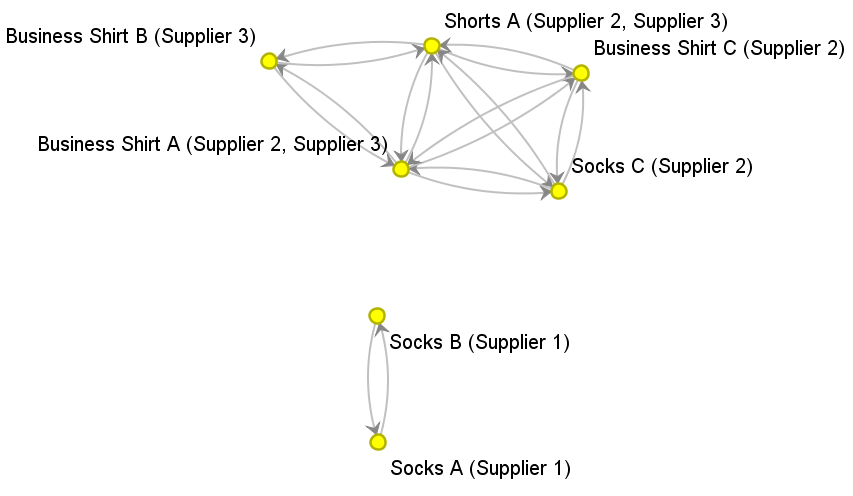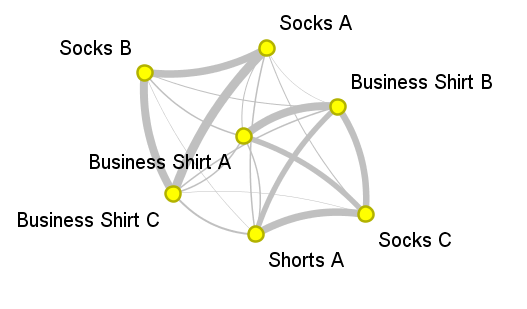Identifying Relevant Business Networks

Ein Artikel von Dr. Christian Michael Schneider, ehemaliger Mitarbeiter DYMATRIX
Network Theory and its Business Implication – Part 1
After the network concept introduction in the first part of this blog series, this post is about an application of these techniques on business networks, here demonstrated on the example of a fashion retailer. The initial starting point is always the identification of a relevant network and its generation from available data. Beside other data, most fashion retailers have two key data sources for applying network techniques, customer information (e.g. address, age or closest shop) as well as product information (e.g. brand, price or sales information). At first glance customer information are usually not sufficient to create a network (except data from direct customer-customer interactions is available), but in principle it is possible to create customer networks without direct customer-customer interactions. However, the focus here is on available and easy accessible data, which can be used to create a product network for a fashion retailer (for interested readers a theory about product network and economic strength of countries can be found here [1]).
Imagine the considered fashion retailer has the following information about his offered products:
- Price information
- Production information
- Sales information
With each of this information, a product network can be constructed, however each one reveal different insights:
I. Price Information – Let us start with a product network based on price Information.
Each product has a price tag and two products are connected if their price difference is below a certain value. Just by visualizing this network as shown below, the fashion retailer can easily identify gaps in his pricing policy (which might influence the customer lifetime cycle, since customers have to overcome a price gap to buy higher value products):

Instead of manually identifying these bottlenecks, existing algorithms from network theory can highlight them, like immunization strategies [2]. From business point of view one can close or open these bottlenecks depending on the favored business strategy.
II. Product Information – With product information, each product can be connected based on suppliers.
When the same supplier manufactures two products, these products are connected. By visualizing this network, one can identify the dependency on certain supplier. Moreover, one can simulate a supplier shortage and its implication on the availability of goods. This business risk can be mapped on the resilience capability problem of networks [3]. In this example supplier 3 is the least important one.

III. Sales Information – The most common way to connect products is based on their sales information.
The number of times two products are sold together correspond to the weight of the link between two products. By visualizing this network, one can identify groups of products sold together:

Here two groups emerge, which are known as communities in network theory (Group 1: Socks A, Socks B, Business Shirt C; Group 2: Socks C, Shorts A, Business Shirt A, Business Shirt B). With the tools of network theory one can identify key members of these communities, which usually rules the community. Transferred to the product network, one can identify important products, which a key for customer satisfaction.
These three introduced business networks are examples for the impact of networks on business decision. However depending on available data, many other interesting networks can be found, constructed and analyzed. These applications will be highlighted more detailed in the next blog posts, starting with the importance of customers’ friends on your business:
Part 0. Network Theory and its Business Implication
Part 1. Identifying relevant business networks
Part 2. Is your customer or your customers’ friend more important for your business?
Part 3. How to identify product groups?
Part 4. How to keep your company happy and healthy?
Part 5. How to get customer (friendship) networks?
Part 6. Affinity modelling with network properties
[1] The Product Space Conditions the Development of Nations, CA Hidalgo et al., Science 317, 2007
[2] Suppressing epidemics with a limited amount of immunization units, CM Schneider et al. Physical Review E 84 (6), 061911
[3] Towards designing robust coupled networks, CM Schneider et al. Scientific reports 3, 2013





